To celebrate the 10th Anniversary of the Wild Bird Club of the Philippines, Rob Hutchinson of Birdtour Asia gives us a list of the top ten must see Philippine birds.
space
10 Must See birds on the First Visit to the Philippines
by Robert Hutchinson
space
1) Philippine Eagle
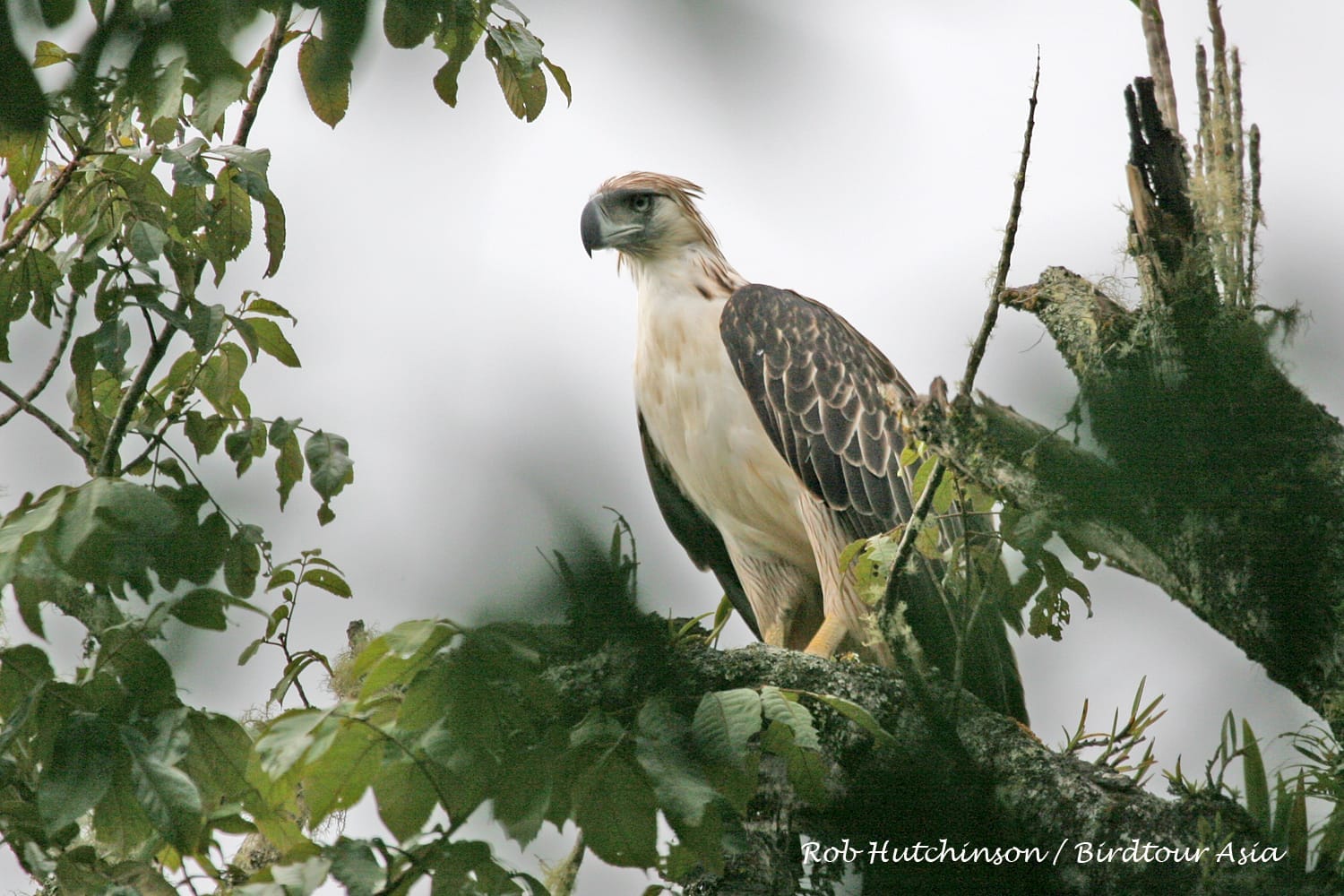
The magnificent Philippine Eagle Pithecophaga jefferyi is understandably one of the most desirable birds for visitors to the Philippines. Standing more than 3 feet tall, this is the tallest eagle in the world, and it’s shaggy brown crest give it a rather regal appearance, deserving of the Philippines National Bird. The Philippine Eagle occupies huge territories in order to find sufficient prey, mainly Philippine Colugos on Mindanao but more varied on Luzon where the colugos are absent, and here Philippine Long-tailed Macaques (hence the alterative name Monkey-eating Eagle), flying-foxes and cloud-rats are favoured snacks. Sadly habitat loss and persecution have reduced the population of Philippine Eagles to a level where they are considered Critically Endangered, with perhaps as few as 90 pairs surviving. Fortunately for visiting birders, the Philippine Eagle can be reliable seen at Mount Kitanglad in Bukidnon Province in Mindanao, where knowledgeable local guides can help scour the montane forests for a heart-stopping encounter with the world’s largest eagle.
2) Palawan Peacock Pheasant
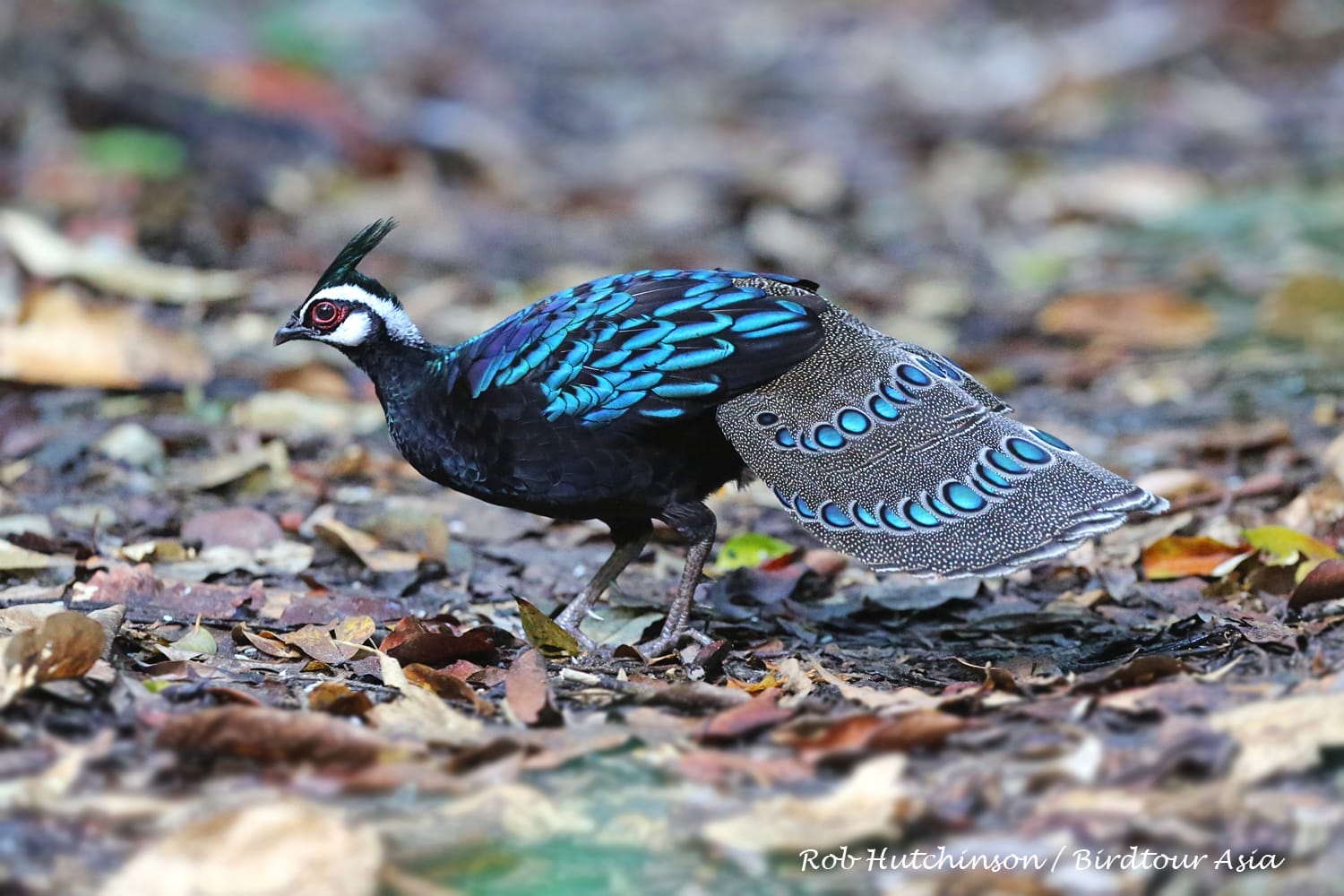
Philippine endemics don’t come much more colourful and spectacular than the Palawan Peacock Pheasant! Found only in the pristine forests of Palawan, the sight of the iridescent blue mantle and wing feathers, lines of neat blue ocelli on the tail, and the striking black and white face pattern, are sure to be the highlight of any Philippines visit. Fortunately for visitors this a rather obliging individual has become accustomed to visitors near the Underground River rangers station in St. Paul’s Subterranean National park, and has provided wonderful views to visitors for more than 10 years now.
3) Philippine Cockatoo

The only cockatoo to be found in the Philippines, the Philippine Cockatoo was formerly widespread across much of the archipelago, but capture for the cage-bird trade means that it is now classified as Critically Endangered, its numbers reduced it to just a handful of individuals on Panay, Bohol, Samar and Tawi Tawi. The main stronghold for the species is on Palawan where sterling conservation work by the Katala Foundation has established a stronghold for the species on Rasa Island. The species recently made something of a comeback in St Pauls National Park and visitors can now usually see the species from a viewpoint on the Puerto Princesa to Sabang road in the late afternoons, although for larger numbers a visit to Rasa Island can be arranged through the Katala Foundation, or the birds can often be found in Narra town on the adjacent mainland where the birds descend to feed around the town in the early mornings and afternoons.
4) Steere’s Pitta
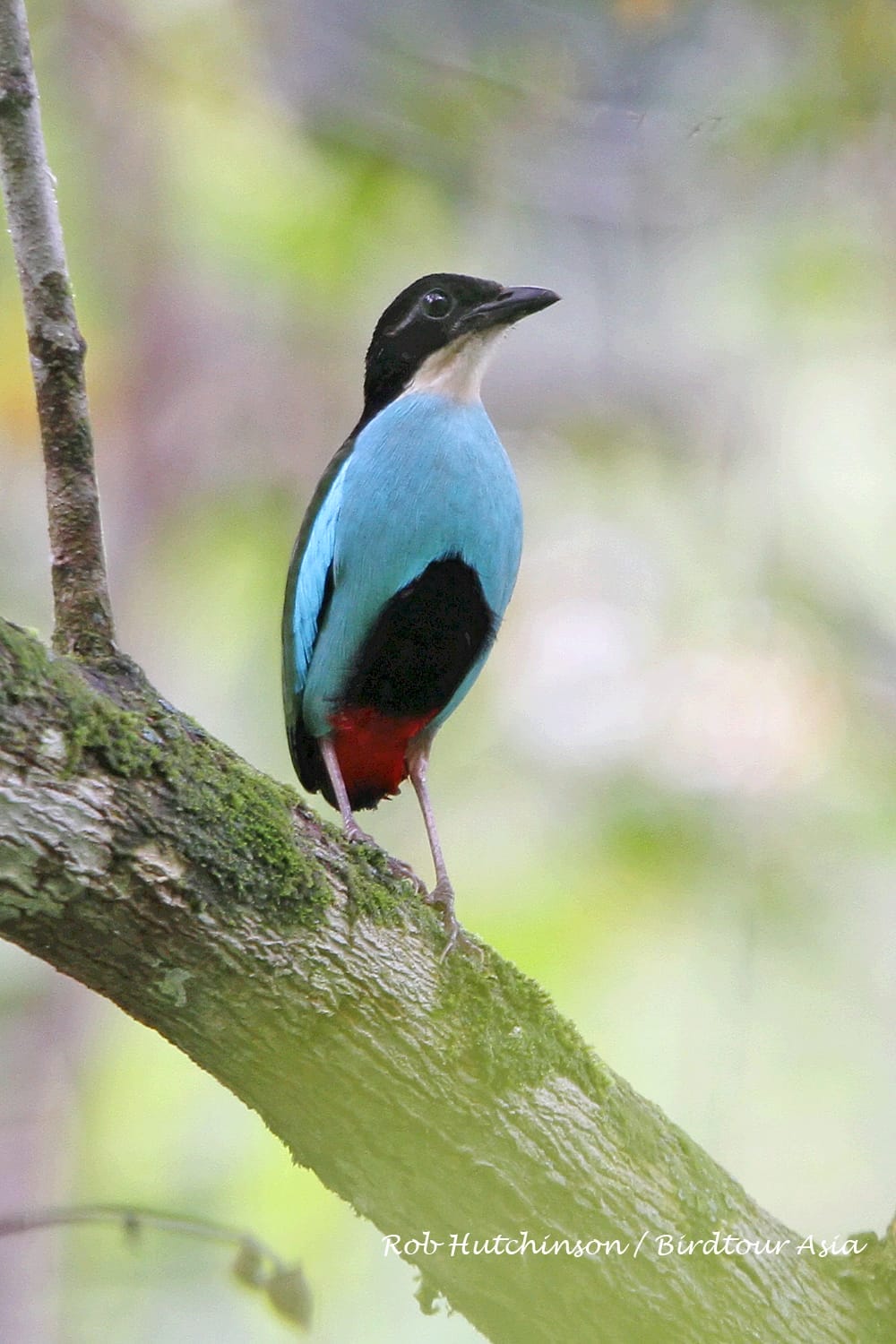
The pitta’s are among the most desirable family for visitors to Asia, and no one who has flicked through any field guide can have failed to be impressed by their flashy colours. Anyone who still needs convincing should read Chris Gooddie’s ‘The Jewel Hunter’, and learn how the allure of pitta-hunting can cause a sane man to give up his job to go in search of these forest beauties! The Philippines has four species of resident pitta, two of which are endemic. The Whiskered Pitta is reknown as one of the toughest pitta’s to find, requiring an expedition deep into the Sierra Madre to stand a good chance. The other endemic, and arguably the best looking, is the Steere’s Pitta of Mindanao, Samar and Bohol which is not unduly difficult to spot in the forests of PICOP on Mindanao, Rajah Sikatuna Natural Park on Bohol or Samar Island National Park.
5) Rufous Hornbill
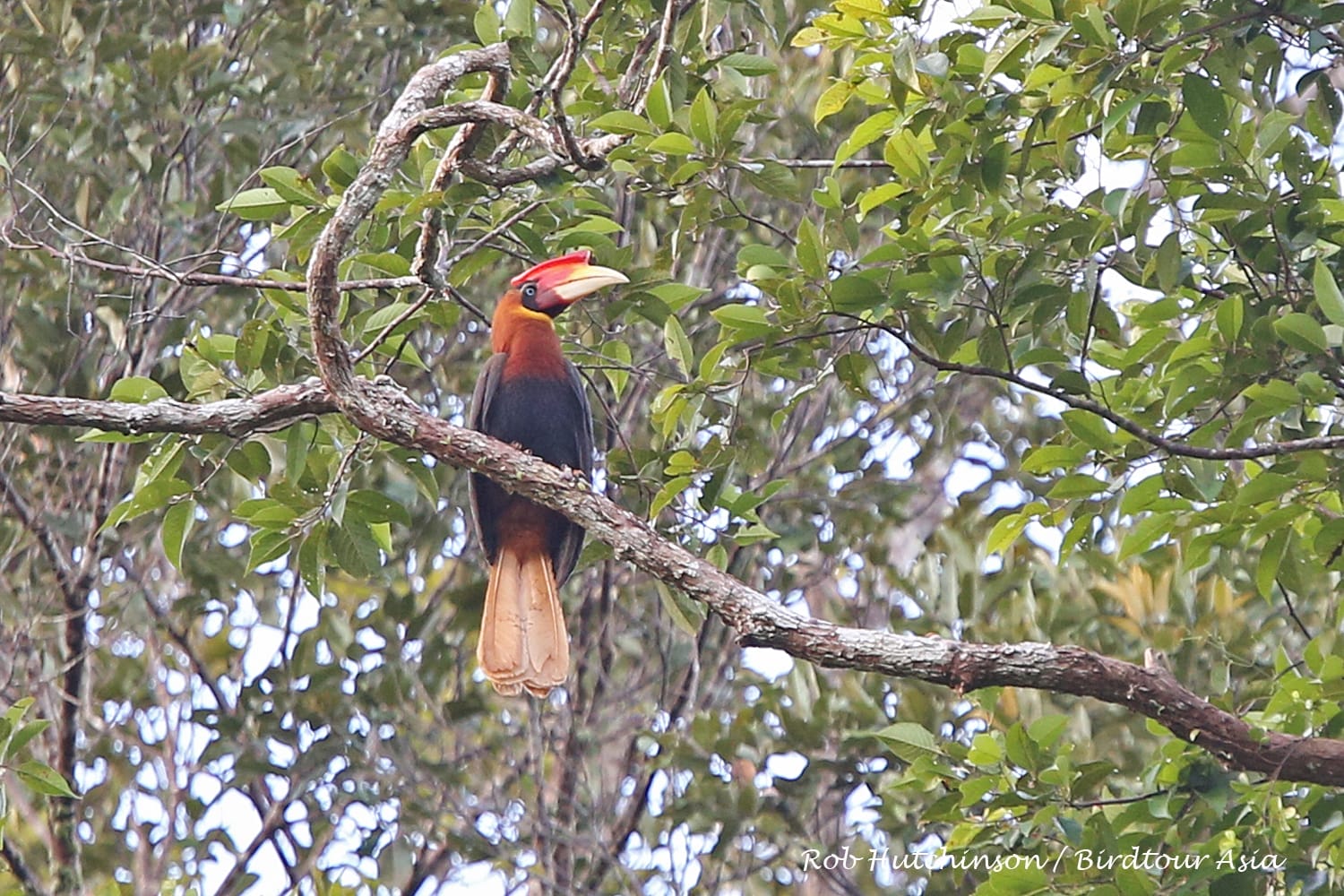
With no less than ten endemic species often recognised in the Philippines, this is truly a hotspot for hornbills. Among them are two species which are classified as Critically Endangered; Walden’s and Sulu Hornbills, but the largest and most handsome is the Rufous Hornbill. Although it occurs on four major islands it is mostly easily seen in the remaining lowland forests at PICOP in Mindanao where the woosh of wings as it flies overhead is sure to get the heart racing.
6) Scale-feathered Malkoha

The Philippines is home to two very funky endemic malkoha, the Red-crested Malkoha is amazing in its own right, but the completely bizarre Scale-feathered Malkoha really takes ones breath away. It is endemic to Luzon where it is found from lowland forests all the way up to the mountains. The easiest place to find it is probably at Mount Makiling, just an hour drive from the international airport!
7) Spotted Wood Kingfisher

The Philippine is full of spectacular kingfishers, many of them endemic. Of the 16 species found here, no less than seven are endemic to the Philippines. The most challenging are those which inhabit forests, they are only truly active in the very early hours of the day, often before it’s even light, and for the rest of the time these bulky beasts spend their time sitting unobtrusively in the forest where only the sharpest eyes can spot them. Once found though, the intricate colours, patterns and spots are outstanding and make all the efforts worthwhile. Arguably the most handsome of the forest-dwelling kingfishers is also one of the easier ones to see – the Spotted Wood Kingfisher – endemic to Luzon, Panay and Negros. Probably the easiest place to find it, are the forested slopes of Mount Makiling, just a short drive from Manila. Here the forest is reverberates to the sound of Spotted Wood Kingfishers at dawn, and they can usually be found perching close to the road during the day time.
8) Green Racquet-tail

Six out of worlds nine racquet-tails are endemic to the Philippines, and these cute parrots with their neat elongated tail feathers are a major attraction for visitors. The various species rarely occur together so it is necessary to visit various islands and altitudes to collect the set but perhaps the easiest to see is also one of the rarest. The Green Racquet-tail has its population stronghold in the well preserved forests of Subic Bay, just a few hours’ drive from Manila. Here the Green Racquet-tail is still quite common and they can sometimes be found feeding in the quieter suburbs of the town.
9) Bukidnon Woodcock

Few things exciting ornithologists more than the discovery of entirely new species to science, birds that have evaded detection for hundreds of years. Several species in the Philippines evaded the early collectors who described the majority of known species and the most recent was the Calayan Rail on a difficult to reach island north of Luzon in 2004. Before this the headliner was the Bukidnon Woodcock which was first detected by its distinctive call on Mount Kitanglad in 1993. Since this the woodcock has been found in relatively few other places, Mount Polis being one, but Mount Kitanglad remains the easiest place to see it. Indeed many hundreds of birders have stood around the lodge at Mount Kitanglad at dawn and dusk over the years, watching them ‘roding’ around the clearing, giving their distinctive rattled calls as they go.
10) Apo Myna
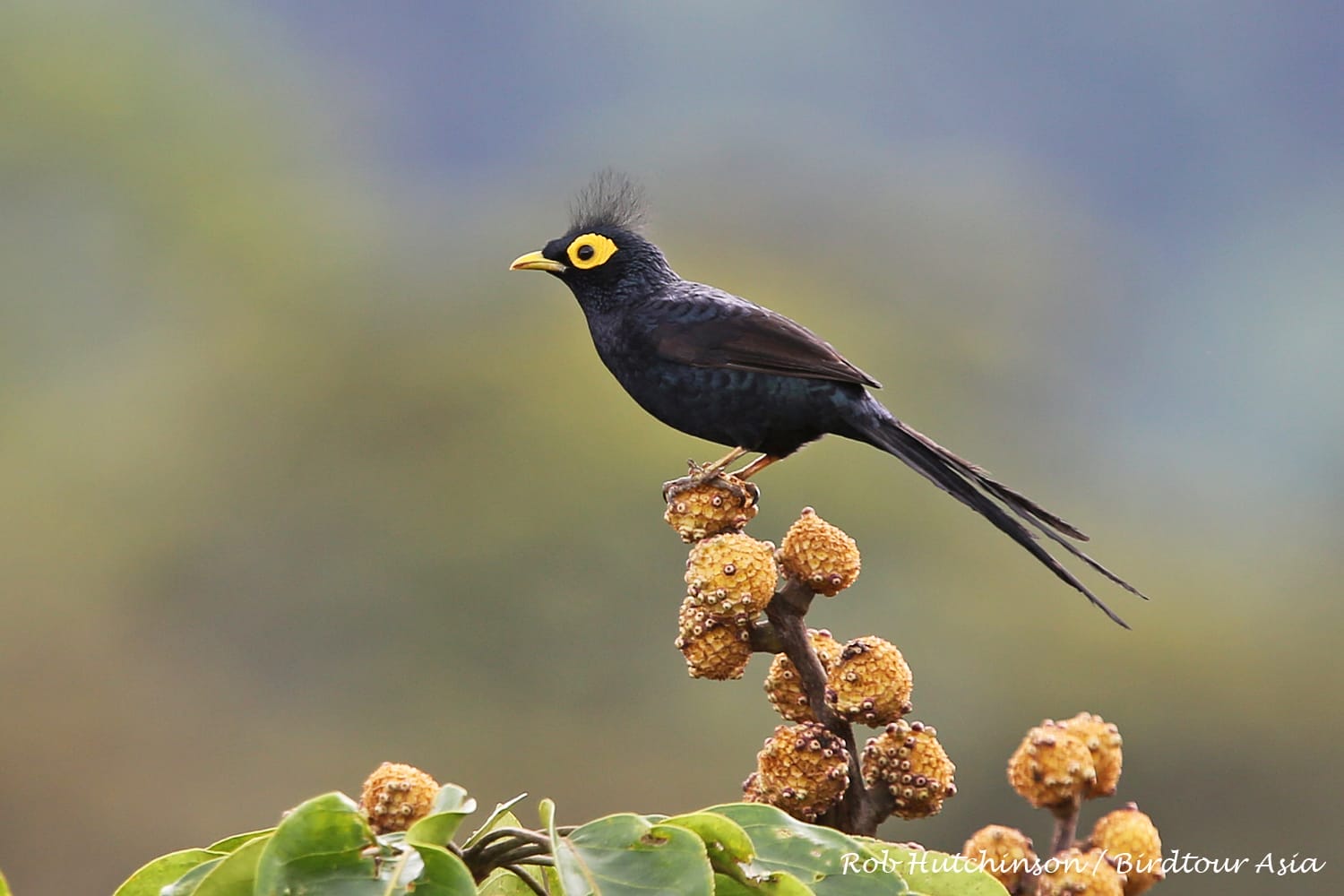
The Apo Myna is one of the most bizarre looking birds in the Philippines and no one ever fails to be impressed by its iridescent black plumage, flashy white rump and above all, the filamentous crest! The bird is easily seen on the higher slopes of Mount Kitanglad in Mindanao and simply isn’t to be missed!

Pingback:July 2013 | e-BON
Great! Only two more to go on my top 10 list.
only seen #3 & #5 but in captivity 😐
Pingback:Community Post: What If The Philippines' Endangered Birds Were Part Of Angry Birds? - Socihunt
They are just amazing. Thanks for sharing.
I’m planning on getting an app myna :3
In my opinion The Philippines is an enchanting place to visit to enjoy bird watching. The feather variety I might add; although the women are also beautiful. There are so many varieties. The colours and hypnotic sounds leaves me in awe and takes away streso.
during the time that i am not in the tourism industry, i am not i interested in birds. yes, i found them beautiful but i am not aware of their importance until one time, i attended to an ecotourism seminar. Now, birding is one of my major intetest.
nalungkot po ako dahil yung scale-feathered malkoha ay natagpuan na naming patay dahil hinuli ng pusa namin kaninang tanghali dito kami nakatira sa sitio kabading antipolo city…. yung ibong ito ay may mahahabang pilik mata at kulay pula ang palibot ng mata nya!!!!
i wish and i hope, please protect; our BIRDS in the PHILIPPINES. And take care all of them. because in other COUNTRY, They protect all their BIRDS. And so, many many BIrds, flying on their country, Unlike in our PHILIPPINES, they selling in the church and the people they buy to give their children. and after that, some of them flying in a cage, they don’t take care so much. they play like a toy. some other birds are die. So, if you looking around in our country. In our tree in our house. WHAT CAN YOU. OF WHAT KIND OF A BIRD? IT IS ONLY A HOUSE BIRD, in tagalog., IBONG BAHAY. Sometimes IBONG MAYA. In month of MARCH. All the SWALLOW BIRDS, came in the PHILIPPINES.And they,so many BIRDS flying in our country. Because they like our weather. But after MARCH, they came on their country. i DON’T KNOW WHAT COUNTRY OF SWALLOW BIRD CAME FROM? i’m only seen a bird on MANILA ZOO, in TOP TEN BIRD. Is only EAGLE and PEACOCK. And the others BIRD are not seen.So, it’s so LUCKY, on part of MINDANAO,BOHOL,And other limited places of our country, found a BEAUTIFUL BIRDS. So please. protect our birds in the PHILIPPINES. AND MORE BIRDS TO COME.
I have only seen and taken photo of No.6&7, both here in UPLB 🙂 Still a long list to go for me po!